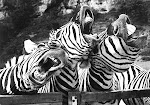June and July kept up the pressure that began to build through May, and as I type this update, we're still $15,000 away from getting out of a hole that has been swallowing our bankroll in big chunks almost every day since the end of April.
I called a temporary halt to betting when it became painfully clear that the "purple protection plan" I introduced back in March to relieve at least some of the stress caused by any major slump proved to be doing more harm than good.
By the July 4 weekend, Line #10 (the source of all Target's woes) had seen two winning bursts of three wins apiece, but because of the protection plan, they were not enough to effect a recovery.
Obviously, when three wins in a row won't deliver a rope to pull us out of the hole, something's seriously wrong.
I stepped back for a while, did some serious number-crunching with the data collected since this real-time, real-money trial began on July 24 last year, and learned that the brake on bet values was not the only problem.
Around the time that I chose to trim risk, I also deduced that from a logical standpoint, it made sense to match large wagers with shorter odds.
That meant that each day's biggest bets were paired up with what the bookies indicated were the most likely dog winners that day.
I discovered that in fact, dogs at odds of +105 or less have a much higher loss rate than those in the +106 to +140 range—at least throughout the 3,400-bet data sample collected since July 24 last year—and that tying big bets to low odds was a very bad idea indeed.
Here's an odds breakdown of Target wins and losses since the beginning.

Now that we are once again within reach of a new best win to date, I want to explain how this seemingly miraculous change of fortune was achieved.
There was no sleight of hand, I promise you.
I simply went back to the original method of taking bets in numerical order (using the bet numbers the bookies and the leagues supply), and ignoring both "dog" odds and bet values.
The first qualifying bet of the day (no more negative odds, just +100 to +140) went to Line #1, the second to Line #2, and so on.
Once Line #10 was left as the only one of 20 lines still in the red, I stopped placing bets on 1-9 and 11-20 and zeroed in on the cause of all Target's recent pain.
Because I have learned that subjectivity is the enemy of profitable betting, I made up each day's wager list as if all the other lines were still in play, took the 10th qualifying dog per the official schedule, and made that the Line #10 selection.
I did that to avoid laying myself open to claims that I was somehow manipulating the numbers.
I'm not interested in cooking the books...just the bookies and their golden geese!
As of today, the bookies' edge for Line #10 (which has been bleeding red ink by the gallon since April 20) was down to 11.0%, or close to statistical expectation, after topping 30.0% for day after day after day.
Anyone who bets knows that the value of negative expectation is always a "big picture" number and that major short-term deviations from that percentage value are inevitable.
For that reason, a viable betting strategy must have the resources to slog through the bad times until statistical expectation is once again being complied with.
The core truth in sports betting will always be that underdogs must win a substantial percentage of all games in order for bookmakers to make the profits their boundless greed demands.
A meager rake from both sides of any given proposition just isn't enough.
In the long run, that dog win percentage must always be less than half, and in every sport, 45% seems to be the magic number that keeps the bookies rich and the punters happy.
Nobody knows the numbers like the bookies do, and while I was surprised that dogs at shorter odds do not, in spite of what logic suggests, win more often, we can all bet that what seems odd to us is just fine to the folks who take our wagers.
If you think about it more than I did before making my wrong assumption, longer odds on the underdog drives more punters to bet on the favorite, and more money on the favorite means more cash in the bank for the bookies when—surprise!!!—the favorite bites the dust.
They're a clever lot, those bookies, which is why we have to do our best to figure out what their odds are telling us, then bet with them rather than against them.
An important reminder: The only person likely to make money out of this blog is you, Dear Reader. There's nothing to buy, ever, and your soul is safe (from me, at least). Test my ideas and use them or don't. It's up to you. One more piece of friendly advice: If you are inclined to use target betting with real money against online "casinos" such as Bodog, spend a few minutes and save a lot of money by reading this._


No comments:
Post a Comment